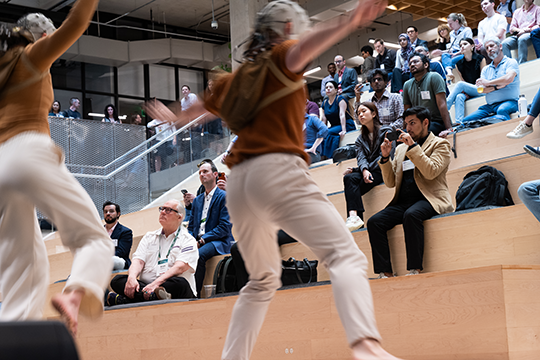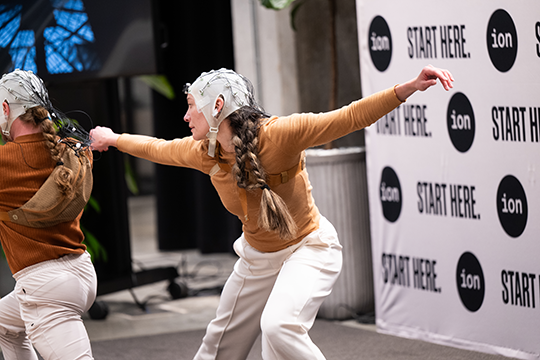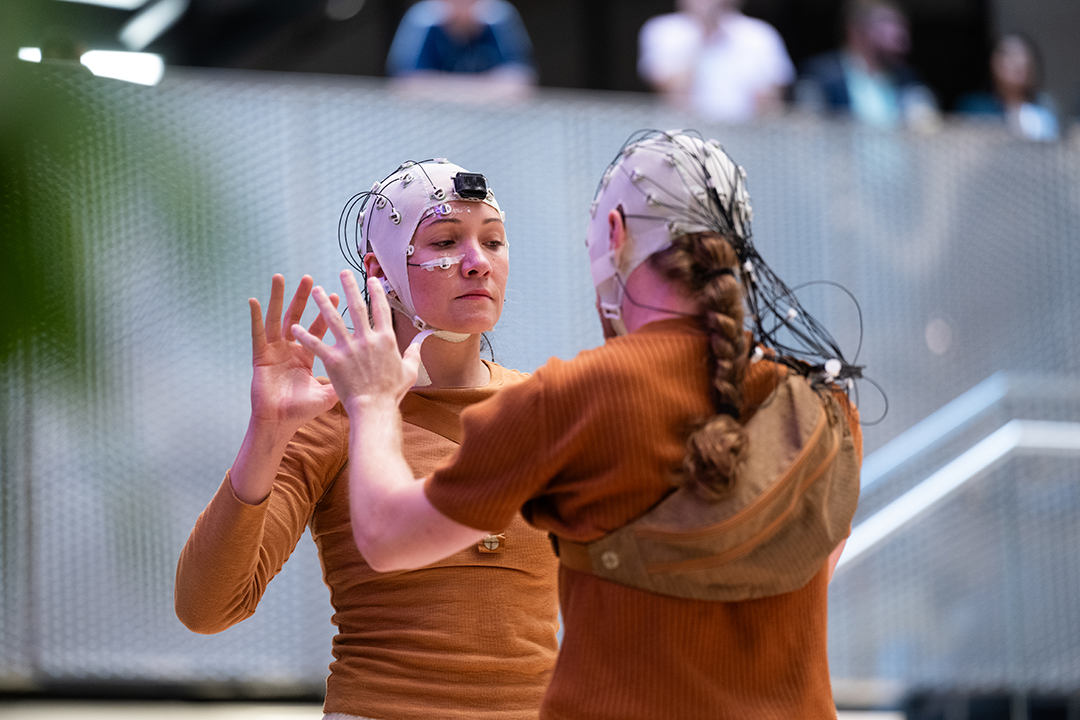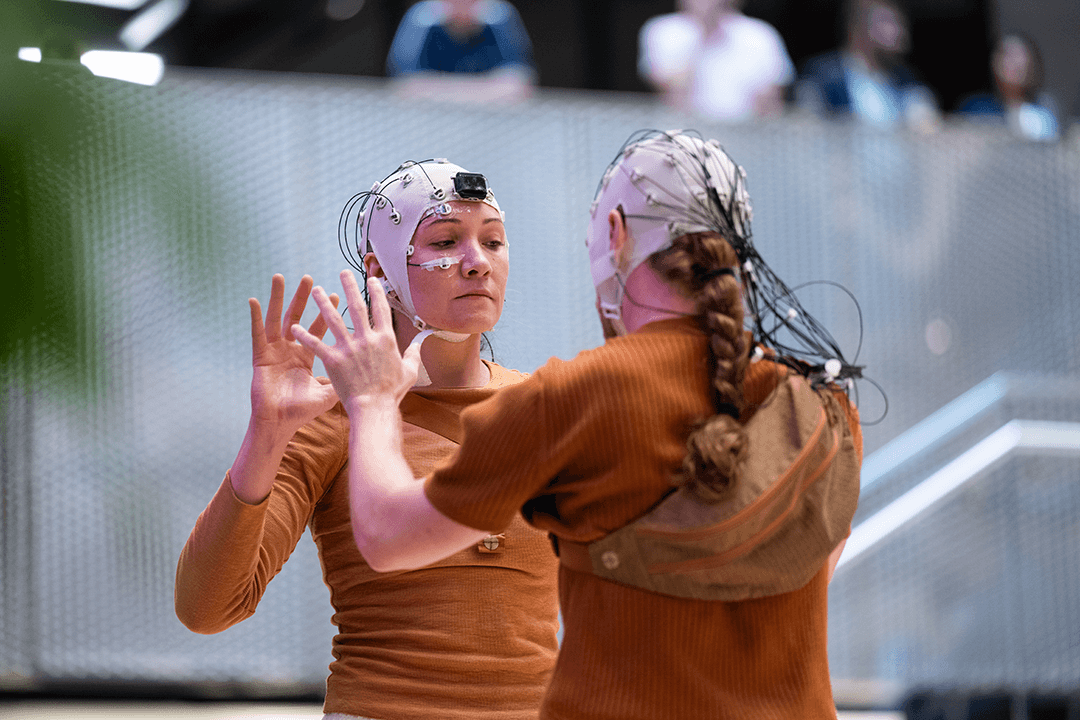A groundbreaking artistic collaboration between Rice University, the University of Houston (UH) and Sam Houston State University will be featured at the United Nations’ AI for Good global summit in Geneva May 31. “Meeting of Minds” is a blend of artistic performance and scientific experiment that explores human connection through dance and neuroscience.
“Part of our mission is to show how much science is in art, how much it actually reveals beyond its beauty or suspense,” said Anthony Brandt, professor of composition and theory at Rice’s Shepherd School of Music and artistic director of Musiqa. “The arts tell us about pattern recognition, how we associate things, what we remember, what matters to us, what guides our attention.”
UH neuroscientist Jose Luis “Pepe” Contreras-Vidal received the invitation to speak on emergent brain-computer interfaces at the global summit as the result of his pioneering research at the UH BRAIN Center (Building Reliable Advances and Innovations in Neurotechnology) funded by the National Science Foundation as an industry-university cooperative research center.

“We focus on reverse engineering the brain and developing new interfaces so that the brain can communicate directly with external devices like robots or exoskeletons or prosthetic devices,” said Contreras-Vidal, director of the UH BRAIN Center and UH Hugh Roy and Lillie Cranz Cullen Distinguished Professor of electrical and computer engineering.
He added that the natural extension was to examine what goes on in the brain during expressive movement in a social context. To do so, Contreras-Vidal began started working with Brandt in 2022 on “LiveWire,” but before that initial performance happened, much work had to be done in the UH Noninvasive Brain-Machine Interface Systems Lab, which Contreras-Vidal directs.
The project’s second iteration, “Diabelli 200,” involved a conductor and pianist wearing brain caps while performing Brandt’s piece inspired by Beethoven’s “Diabelli Variations.” Brandt said the performance marked the first time a conductor wore full-scale neuroimaging equipment during a live performance. Maxine Annel Pacheco Ramírez and Aime Aguilar-Herrera, UH graduate students in electrical and computer engineering who will be in Geneva for the summit, recorded the mobile brain imaging data. Then Shepherd School violinist Nanki Chugh, who performs in “Meeting of Minds,” analyzed the collected data during the “Diabelli 200” performance and won first place for graduate oral presentation in neuroscience at the 2024 Emerging Researchers National Conference in STEM. Her investigation of the neural dynamics between conductor and pianist was sponsored by a training fellowship in the UH BRAIN Center’s Neuromotor Skill Advancement for Post-baccalaureates program funded by the National Institutes of Health's Eunice Kennedy Shriver National Institute of Child Health and Human Development.
“She looked at cue points to see what was happening in the brains of the pianist and the conductor, and she could see exactly the part of their brains that were synchronized and the parts of their brains that were working independently,” Brandt said.
Now “Meeting of Minds” tackles the timely issue of social division. The performance features dancers Lauren Serrano and Tyler Orcutt, who start in conflict and gradually move toward cooperation. The choreography by Andy and Dionne Noble incorporates elements known to trigger neural synchrony such as eye contact, touch and synchronized movement. Thanks to projections designed by Shepherd School doctoral candidate Badie Khaleghian that decipher live data from the EEG caps, the audience can watch how the dancers’ brains respond throughout the performance.

“The theme of the dance perfectly aligns with the United Nations’ mission of fostering international cooperation,” Brandt said, who composed the score. “It also gives the scientists windows into different types of social behavior along the way.”
“'Meeting of the Minds' is an example of a non-medical brain-computer interface to investigate social interaction/collective neuroscience in an ecological setting," Contreras-Vidal said.
This performance, Brandt added, represents a significant step toward studying human behavior in natural settings. Traditional brain imaging techniques often restrict movement and require a sterile environment. Mobile brain imaging, as used in this project, paves the way for studying the brain in more dynamic and ecologically relevant contexts.
“Eventually scientists are going to need to be in much more full-fledged humans-being-humans kind of situations,” Brandt said.
“Mobile brain imaging, brain computer interfaces and AI algorithms developed at the BRAIN Center, which allow the investigation of coupled brain activity, dance and music, are part of that pioneering,” Contreras-Vidal said.
Brandt said he was thankful for the Rice Faculty Initiative Fund grant, which is allowing Shepherd School students Chugh, Astrid Nakamura (violin) and Gabe Galley (viola) and alumnus Christopher Ellis (cello) to travel to Geneva for the performance.
The May 31 performance of “Meeting of Minds” will be streamed live here.


